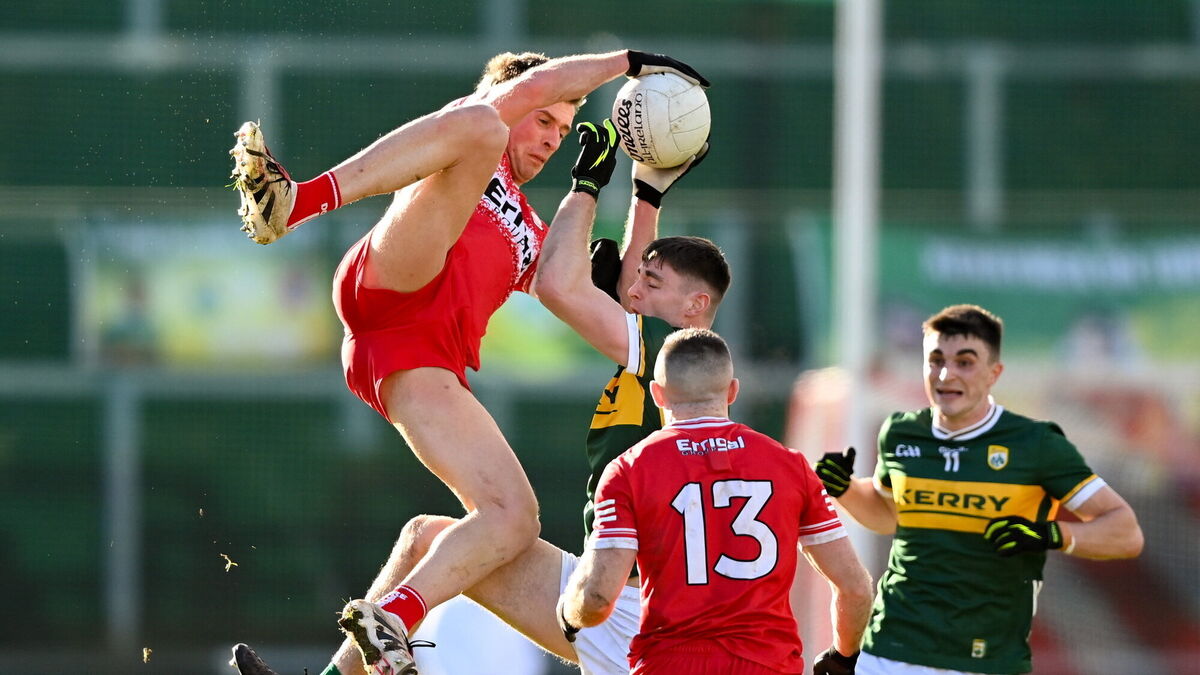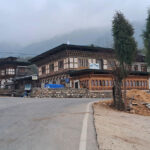
FOR the past few years involved with Kerry, a decent chunk of our training time was taken up with becoming better in ‘slow attacks’. Too often the Kingdom had come unstuck against the modern style of defending deep with big numbers behind the ball. It became an Achilles heel.
We’d set up half pitch scenarios where the defending team would have 15 inside their 45, with the attacking team getting several opportunities to break it down before flipping it over and repeating the dose. It was hard claustrophobic graft – akin to stuffing David Clifford and co into a phone box with a team of bouncers manning the exit and waiting to pounce.
It was an attempt to make the players more comfortable dealing with the uncomfortable. The realities of modern football. After just two rounds of the National League under these new rules, the game looks unrecognisable from that drudgery.
Exhibit A – the 3 v 3 structure.
This has been a real success already. In terms of the structure, it provides for teams to move the ball in transition from back to front much quicker but also in terms of only allowing 11 outfield defenders on the other side.
Take Ciaráin Murtagh’s spectacular outside of the right pinged goal from over 40 metres late in their game against Down in the first round. With 58 minutes on the clock, and a player off the pitch with a black card, Roscommon trailed by a point. Under the old rules, that goal never happens in a million years. Murtagh along with everybody else would have been back inside his own 45 helping his teammates to defend and stay in the game. When they won it
When they won it back, it would have turned into another slow ponderous play consumed with minding the ball and working a high-percentage shot. What we got was very different. A block down, a long diagonal kick pass and a classy finish. The structure gave the opportunity for pace in the play.
Exhibit B – the kickout arc.
Regularly with Kerry, we’d have had heated debates about the value of challenging opposition kickouts. Are you brave enough to push bodies up or do you drop numbers off and try to protect the house. Risk v reward.
Under the new enhancements, the reward appears much more achievable. Niall Morgan and Tyrone won six of 15 on their own kickout in the first half against the breeze v Armagh last Saturday night and trailed 17-3 on the scoreboard. Both teams finished the game in the mid 60% range – considerably lower than kickout success rates of previous years.
This is going to have a major impact on the game moving into the summer. The buzz that builds amongst the supporters as another long bomb of a kickout is put into the mix is quite palpable.
We saw some spectacular high fielding from the likes of Tohill, Glass and O’Connor as Kerry stole the spoils in Derry on Sunday, but the hand-to-hand combat in the trenches for breaks is where games are going to be won and lost. If the previous iteration of the game had dictated a midfielder’s most desirable attribute was mobility over ball winning, I think the conditions created in this new version will have coaches re-evaluating that assessment.
Exhibit C – new scoring system.
I must admit, this was the one rule I was more sceptical about seeing come into Gaelic football, but it has grown on me. My reticence was borne from the emergence of the three-pointer as the primary weapon in basketball and how that has fundamentally altered the way that game is now played. In the 80’s and 90’s when basketball was surging in the States, the 3-ball was an afterthought in comparison to shots taken closer to the hoop. The analytics guys determined that its more productive to take a higher volume of 3’s as opposed to 2’s and the game has trended into a long-range shooting contest ever since.
While I don’t see it having the same dramatic influence on football (the goal is still the higher value score), after week two of the league, my rough calculations indicate we’ve seen an increase of two-pointers scored from the opening week .
Take Galway’s clever use of Shane Walsh on Sunday as the second ‘midfielder’. As they won the throw-up after half-time, Walsh cruised in from the sideline to take the pass and stroke over an important two-point score off his left. A nice combination of great skill and sharp coaching.
Exhibit D – Everything else.
The solo-and-go is a big addition and has already brought greater pace to the game.
Despite some chirping from managers about players having to hand the ball back to the opponent after a foul, I like the bit of chaos it creates. For too long, the cynicism of throwing the ball away to delay a free being taken wasn’t being punished sufficiently with a 13m advancing of the ball. This rule has eradicated that messing in only two weeks.
Eventually, the FRC may have to look at the goalkeeper situation of joining the attack untracked. Ethan Rafferty put on an offensive masterclass for Armagh on Saturday, where he was regularly creating an extra man up front. Will we eventually get to a situation where one of the three attackers up top is allowed to track the keeper and make it 12 v 12? Best of luck officiating that one.
It’s obviously early days, but we’ve seen a significant increase in scoring, more contests for possession all over the field, more space to attack, some brilliant man on man defending, no lead has appeared overly safe (see Down v Cork) and games have generally been exciting to watch.
It’s been a positive start to Gaelic football’s brave new world.














